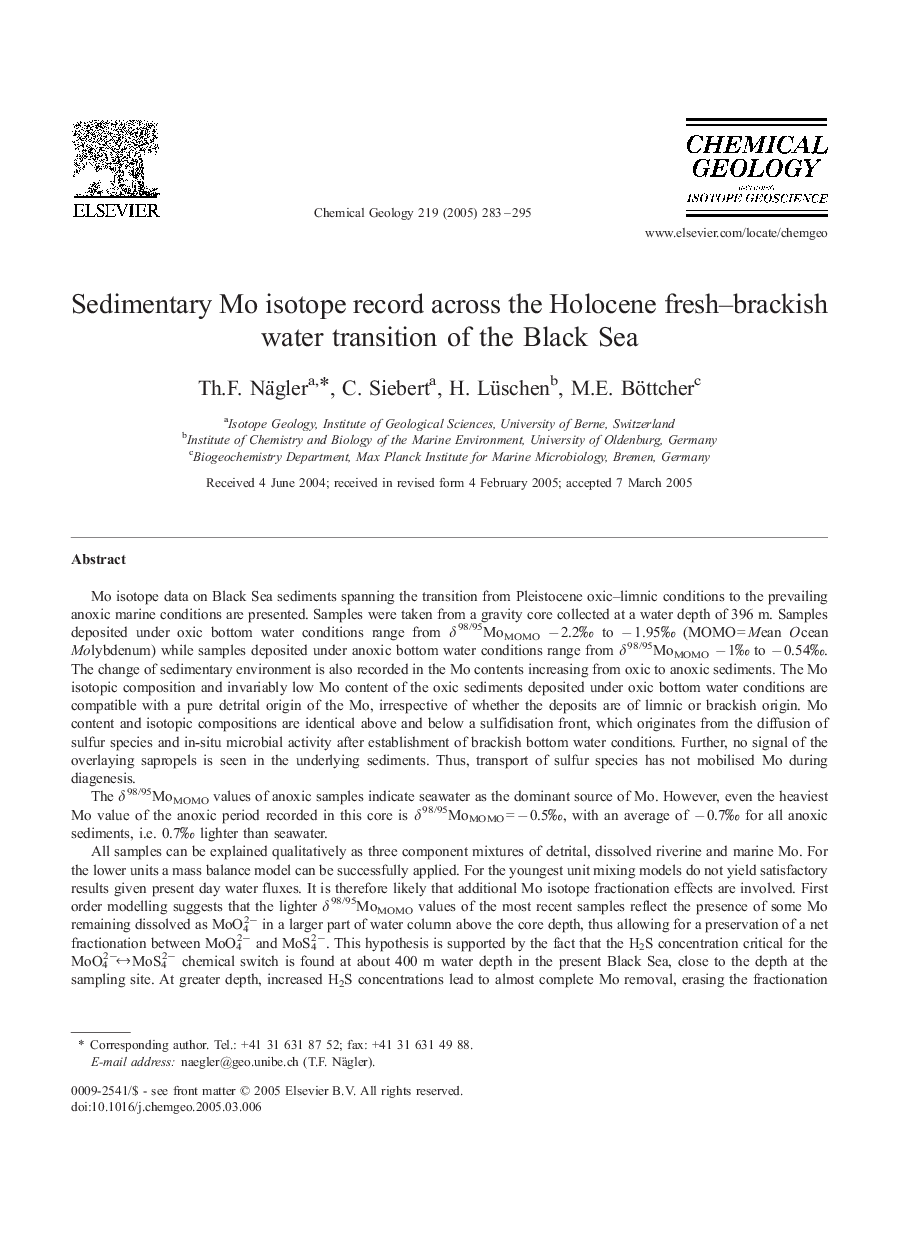| Article ID | Journal | Published Year | Pages | File Type |
|---|---|---|---|---|
| 9528992 | Chemical Geology | 2005 | 13 Pages |
Abstract
All samples can be explained qualitatively as three component mixtures of detrital, dissolved riverine and marine Mo. For the lower units a mass balance model can be successfully applied. For the youngest unit mixing models do not yield satisfactory results given present day water fluxes. It is therefore likely that additional Mo isotope fractionation effects are involved. First order modelling suggests that the lighter δ98/95MoMOMO values of the most recent samples reflect the presence of some Mo remaining dissolved as MoO42â in a larger part of water column above the core depth, thus allowing for a preservation of a net fractionation between MoO42â and MoS42â. This hypothesis is supported by the fact that the H2S concentration critical for the MoO42â â MoS42â chemical switch is found at about 400 m water depth in the present Black Sea, close to the depth at the sampling site. At greater depth, increased H2S concentrations lead to almost complete Mo removal, erasing the fractionation signal. Difference between Unit I samples from this study, and those from earlier publications (with samples taken at greater depth) may thus merely reflect the fraction of Mo scavenged at different depths. The degree of Mo scavenging in fossil black shales and the continental Mo contribution are both difficult to constrain. Therefore, black shales from restricted semi-enclosed basins may not document the Mo isotopic composition of coeval ocean waters. However, oceanic Mo is a dominant Mo source in these basins, and anoxic sediments give reliable minimum values for coeval ocean water Mo isotopic compositions.
Related Topics
Physical Sciences and Engineering
Earth and Planetary Sciences
Geochemistry and Petrology
Authors
Th.F. Nägler, C. Siebert, H. Lüschen, M.E. Böttcher,
